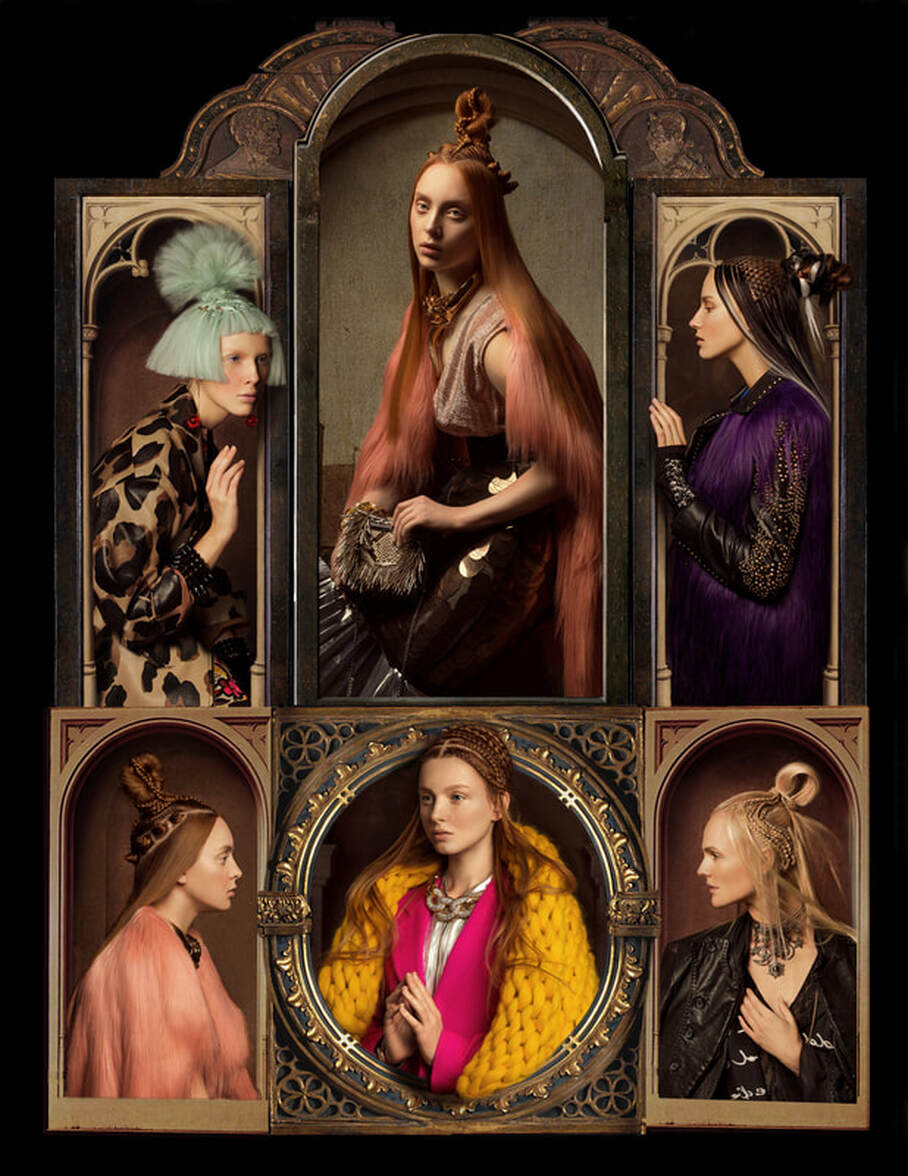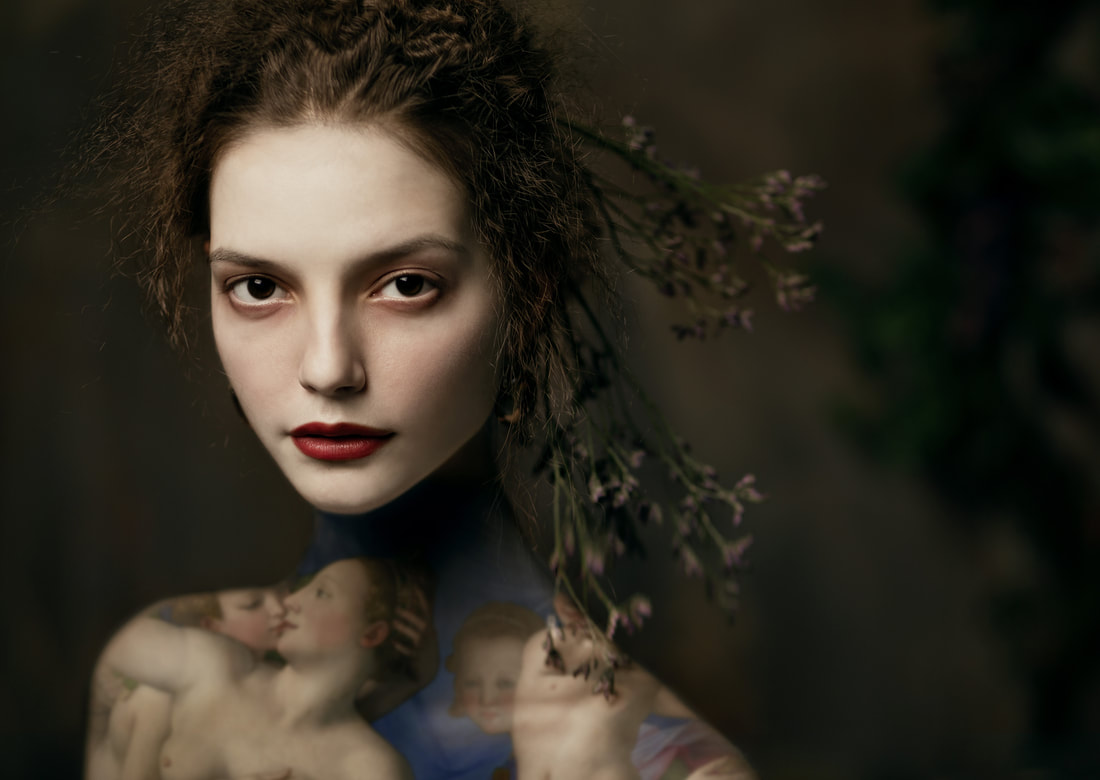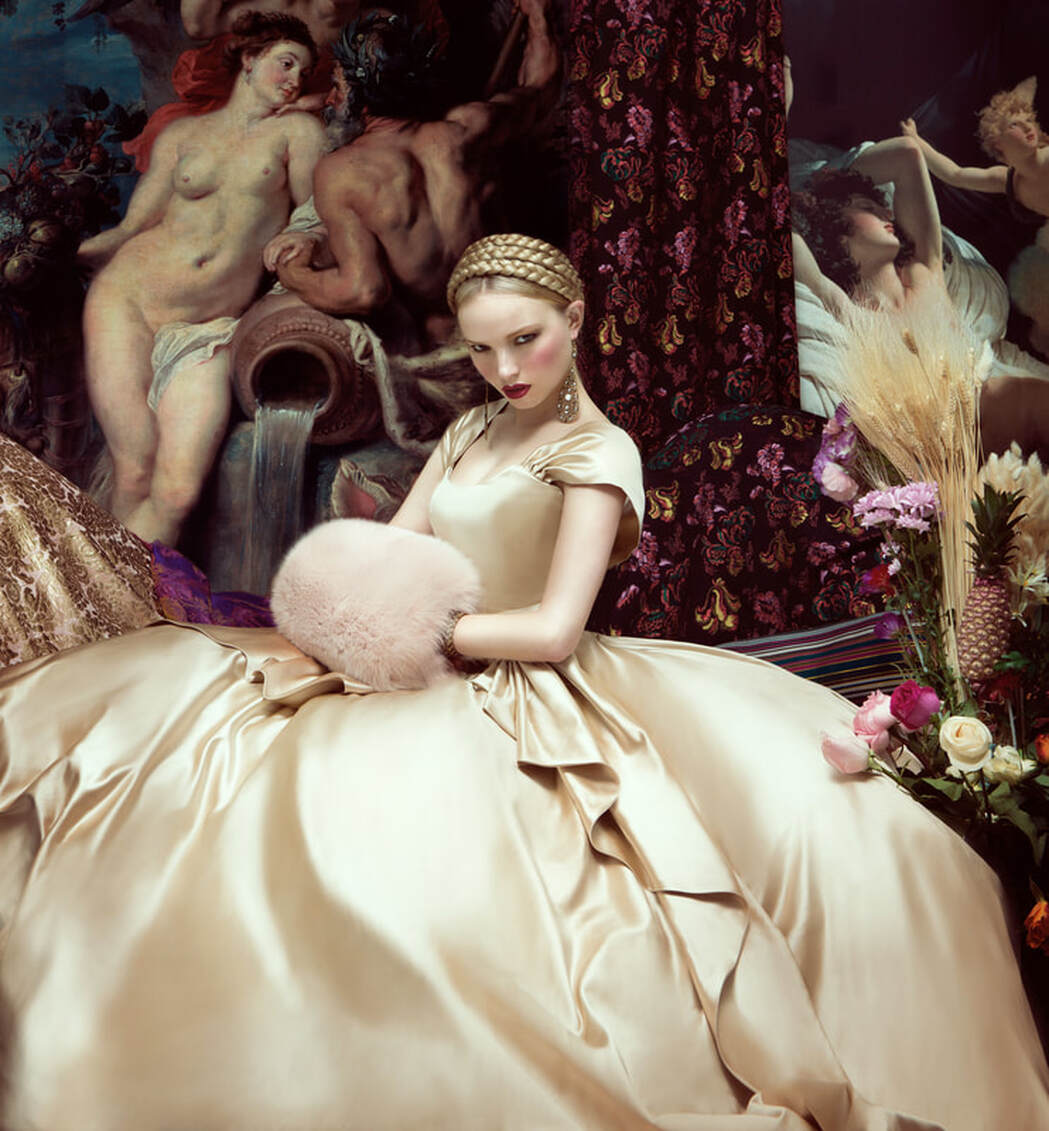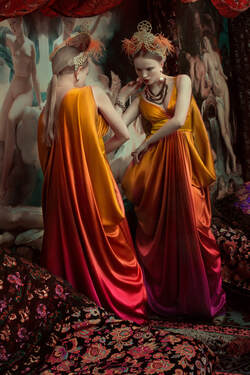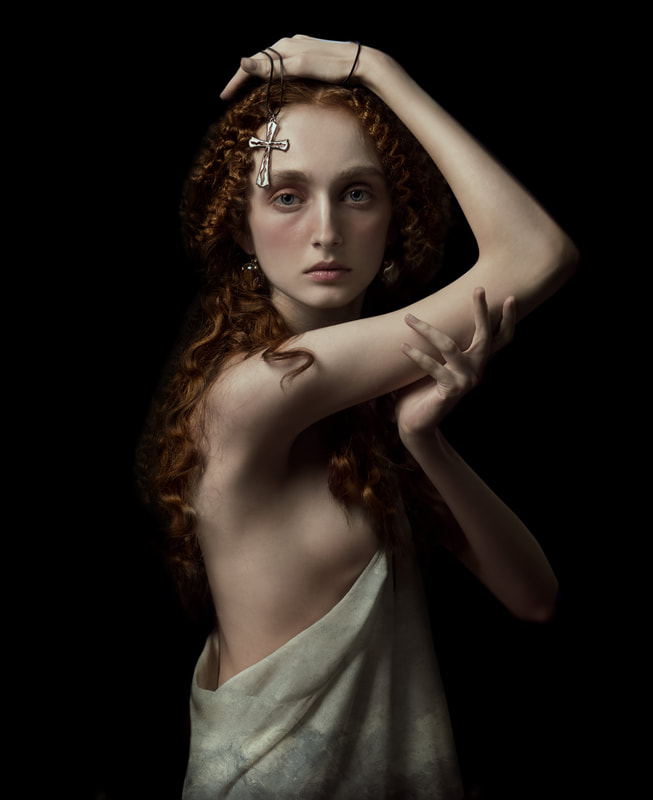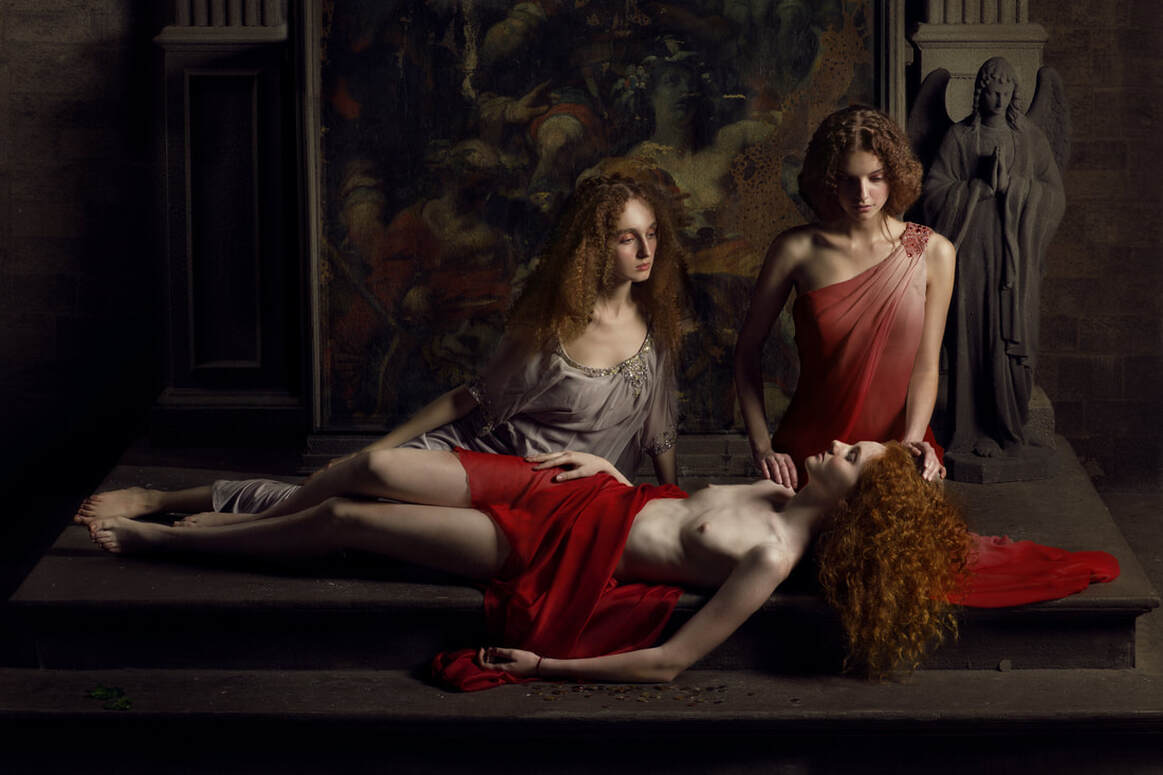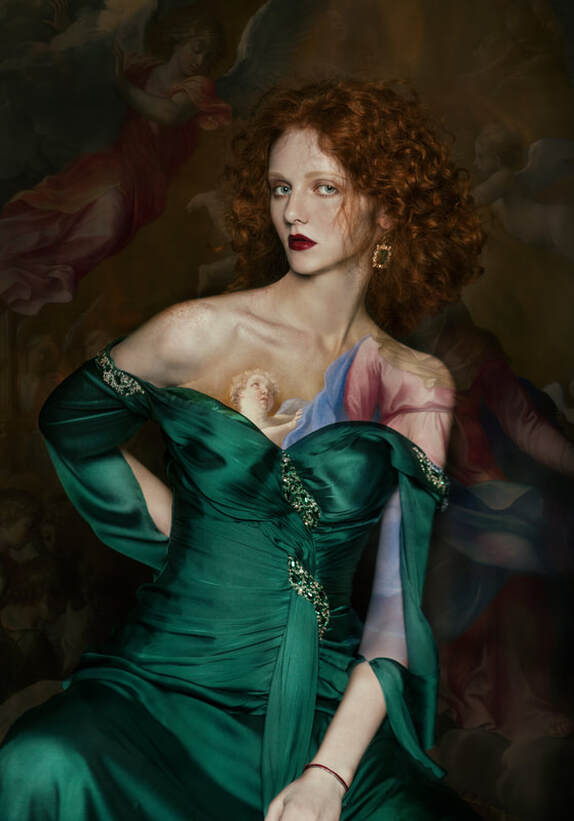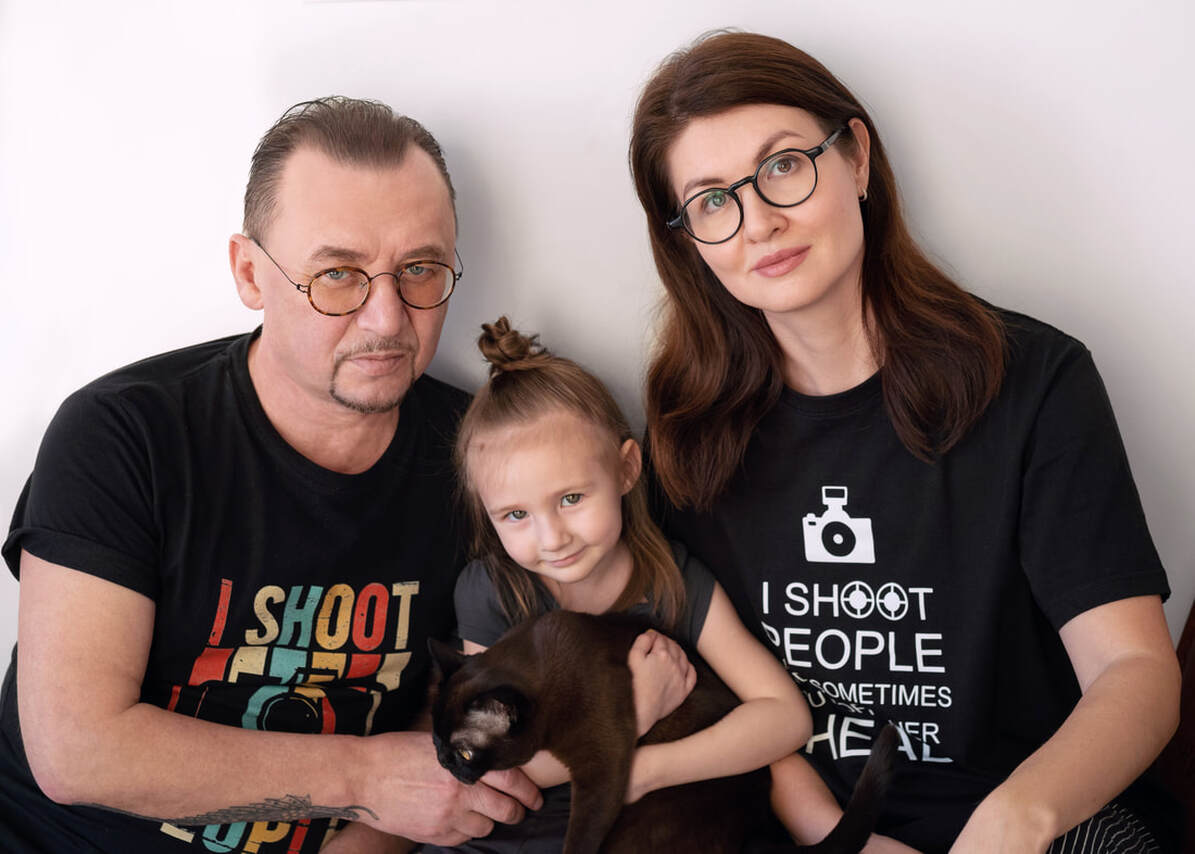Andrey Yakovlev & Lili Aleeva, Photographic Artists
|
On his tenth birthday in 1972, Andrey Yakovlev’s grandmother gave him a Smena-8m camera during a trip to Moscow. He loaded his first roll of film, shot it and developed it. When he saw that everything had worked out and his first photos looked good, Andrey instantly fell in love with the whole process. For the next seven years he photographed voraciously as an amateur. After finishing high school he entered a trade school for studio photographers at age 17. His studies there lasted 1.5 years. He began working as a professional photographer when he graduated in 1980.
There were no private photo studios in the Soviet Union at that time, only state-run ones. Yakovlev worked in several of these. In 1981 he was drafted into the Army, and in 1983 he returned to civilian life and resumed work as a studio photographer. For a time, Yakovlev had his own studio, but then realized that being a studio owner was not his life goal. Now he works as a freelance photographer. “There are 760 studios in Moscow today, one for every taste.” Yakovlev comments. “Most photographers are not attached to studios. I am much happier working freelance.” |
|
“When I was first starting out as a photographer” Yakovlev explains, “there was virtually no advertising in the Soviet Union, and we had no access to advertising imagery from other countries either. We photographers had to draw our inspiration from classical painting and photography.” The influence of classical painting on his work is especially evident in the images we chose for this feature. He and his team have also done a wonderful fashion series based upon the works of Tamara de Lempicka painted in the 1920s. About ten years into his career, Yakovlev’s visual vocabulary took an exponential leap:
“All the information from the west suddenly flooded into the Soviet Union in the nineties” he explains. “I, for example, saw my first Vogue magazine when I was 27 years old! I was deeply influenced thereafter by the works of photographic masters Helmut Newton, Richard Avedon and Steven Meisel. I personally like being inspired by the craftsmanship in other people's photos, especially when they do something better than I do.” For the last 24 years Yakovlev has been working as a team with his wife Lili Aleeva. The couple met at a modeling school that Lili attended during her gap year between high school and University. In the process of watching Yakovlev’s and other photographers’ shoots happening at this modeling school, Aleeva soon realized that it was far more interesting to be behind the camera at a photo shoot than modeling in front of the camera. She was most inspired to create the sets and come up with the concepts, do the hair and makeup and art direction. To earn some money, she went to work in the props department of a local theater. There in the props department, Aleeva learned how to create any and all kinds of decorations, interior design, props and sets, all by hand. In 1997 she entered the University at the Faculty of Design, and for the next six years studied and concurrently worked as a stylist for Yakovlev. |
|
Aleeva graduated from University with a degree in photography and advertising. After graduation, the couple moved to Moscow and Aleeva started working as a graphic designer in a design studio. Her work garnered many awards at international advertising and design festivals.
After a few years Aleeva returned to photography and continued her prior work as an art director, creating projects from start to finish. She cultivated a dedicated team of make-up artists, clothing stylists, and modeling agencies, after which everything moved to a more professional level. The Aleeva/Yakovlev team started doing big projects, catalogs, advertising posters, calendars, etc. “Our work starts as soon as a client calls or writes” Yakovlev explains. “LiIi is an art director, stylist, set designer, organizer and versatile specialist. Lili also does most of the beauty work and artistic beauty photo editing on our images. Lili can also do models’ hair and makeup very well if needed. As work partners and spouses, all of our life is spent shooting and discussing ideas for future projects. Since we shoot fashion and advertising, the choice of location sometimes takes a lot of time to decide upon in arguments and discussions.” Aleeva agrees that finding the right location is always a challenge. “We do not have any big props warehouse, so we do not keep our old sets or re-use them.” she reports. “We are always on the lookout for good places to do our shoots. Sometimes we are looking for a long time before finding the perfect spot.” But that is not even the most challenging aspect of the couples’ work. Aleeva explains that “the most difficult thing for us when we start working with a new client is to convince him or her to trust us and not try to do the project themselves. In our native Russia the customer loves to do a lot himself and to be a participant in the process. As a result, the end product is not always so good. The main thing we need from our customers is to give us the opportunity to complete the project independently from start to finish.” “After talking with our customer to understand their needs, brainstorming begins” Lili explains. “Andrey and I discuss topics very emotionally. We often disagree and argue, and sometimes we even shout! Eventually we find a common ground and start making concrete plans.” |
|
Aleeva further explains how their artistic process works: “Once we have a story in mind, we look for models through agencies to fill the roles. This is one of the most difficult tasks, finding the right model who fits the idea. We seek out a location, or we make a complete set to use in a studio. After that, I assemble a team from among our favorite creatives. Then we have the shooting day.”
Yakovlev adds in how the team directs its models on the shooting day: “We usually suggest to our models a storyline and a role to play, and while they act that out we catch the shot. That way there is interesting interaction going on in all the photos. At every shoot there are tons of clothes to photograph, and we shoot a lot. We don't have time to direct the specifics of the story shot by shot, or to create a new scenario for every look. We really value the models' ability to stay in character and work hard. Not everyone can handle the intensity of an 8 to 10 hour shift.” Aleeva and Yakovlev work together on the selection and post production of the images. “After the shoot we do our selections from the total shots taken” Aleeva explains. “Andrey and I select the best frames together, often disagreeing, but making room for each other’s opinions.” The next step is the retouching. The technical part gets done by Andrey, and the more artistic retouching is done by Lili. After the images are perfected, the two hand over the finished material to their customer. So far they have exceeded all customers’ expectations time and again. When asked what the hardest shoot was that they ever did, Yakovlev remembers one several years ago shortly after the birth of their daughter which was particularly physically demanding. “We were in Turkey to create a wedding dress catalogue. We shot in a very old town, with steep narrow streets. The heat was extreme and we had our three-month-old baby along with us in a pram. The models kept getting sweaty, and the clients kept getting angry. When you see the catalog now, it looks like it was all fun and pretty and cheerful. That means all the struggle to get things just right despite the heat was worth it.” When asked how they come up with so many varied ideas for shoots, each so rich with narrative and character, Lili explains that “Our inspiration comes from all kinds of unexpected places. Anything can inspire: a movie, a painting, a model, clothes, an interior, you never know when inspiration will strike.” “We get a great deal of inspiration from fine art” she continues. “Since the very beginning of history, each period has had its geniuses who created a style, and determined a direction in art. Among masters of modern photography Andrey and I tend to draw inspiration most from Newton, Meisel, and Paolo Roversi. These three more than most have determined the direction of modern glamour and fashion photography.” |
|
With their team, Lili explains, they are constantly coming up with new concepts for new projects. They do not keep a list of ideas to do later when they are less busy. “Shoot ideas are not stored for a long time, if they are not made in the near future, any idea tends to lose its power, so we do not store old ideas, they must be fresh, like fresh bread with a crispy crust” she says.
“With our projects,” explains Lili, “we first want to convey the beauty of a person, then focus on composition and communicating an emotional background. Sometimes we try to convey a plot.” “We love working with different themes” Aleeva explains, “Most of all, we love mixing styles and themes and combining them into one story. We do not like superficial simple ideas, we are always looking for complexity. Light, color, location, all of it will depend on furthering the story idea.” Aleeva states that “Although I am available to work with other photographers and sometimes do, I mainly work with Andrey, as it is easier for me to implement any idea with him, because he is a great professional in his field.” When asked what he considers his artistic style to be, Yakovlev insists that he does not have one. “Instead, I find it very interesting to tackle achieving a different style for each project, sometimes styles radically different from those I have tried previously. That way I am continually challenging myself and improving my skills, and each client gets something unique and just right for their campaign.” |
|
“I would describe myself as a quiet professional. Yakovlev states, “I love what I do. I am satisfied with my profession.” Aleeva agrees. “I knew what I wanted to do for a living as soon as I started participating in shoots, and I still do it today. Many years from now, I hope that I will still be working in this area and still enjoying it. It has been a very rewarding career.”
When asked which of their past projects are closest to their hearts the two artists are reluctant to choose. “We treat each of our projects like a child that needs to be born, raised and released into the world” Aleeva explains. “We cannot single out specific favorites, they are all close to us, but over time we need to forget them and move on in order to have space in which to create something new.” Regarding the three editorials included here, Aleeva describes “Tears of the Mistresses” (shown at the end of the article) as follows: “The theme is in the style of the Pre-Raphaelites. The plot of the story is that the knights have gone off to war, leaving their wives and mistresses behind at the castles. We are imagining the way the women felt, wondering if and when the men would return to them.” Aleeva describes the story behind the sumptuous imagery of “Golden Gate” (see the cover image and the images surrounding this page): “The topic of this session is the conquest of Constantinople by the Russians. It is about the fusion of Slavic-Byzantine and Eastern cultures. It is about the strength of the Slav and her greatness.” Referencing the editorial “Icons,” shown at the start of this article, Aleeva explains that “This session was commissioned by the Russian Union of Hairdressers, Dolores, and is based on a mixture of iconic painting styles, paintings by Albrecht Durer, and the contemporary punk style.” Stay tuned for our next issue of ICON Magazine, which will feature this uber talented duo’s editorial “Muse and Violin,” which Aleeva describes as a fashion story “made in collaboration with stylist and costume designer Hannah Jatsko, and based upon the aesthetics of the artist Marc Chagall and his muse and wife Bella Rosenfeld. It is set in the 1920s in the Belarusian city of Vitebsk,” and takes place in a set that looks like an enchanted antique store. Prints of photographs by Andrey Yakovlev and Lili Aleeva, including some of those shown here, range between $270 and $1299 depending upon size and framing options and can be purchased online through https://www.lumas.com/artist/andrey_yakovlev_lili_aleeva/ To see more of this duo’s incredible body of work, visit their website at www.behance.net/AndrewLili, and Follow Lili Aleeva’s Instagram: @lilialeeva and Andrey Yakovlev's Instagram: @yakovlev_andrey_photo |
